Red oak: description and cultivation

Red oak - an extremely beautiful and tall tree with bright foliage. The homeland of the plant is North America. It was introduced and spread in European countries with a temperate climate and in Russia. Wood, which is widely used in many industries, is of value. Used in landscape design for decorating parks and gardens.
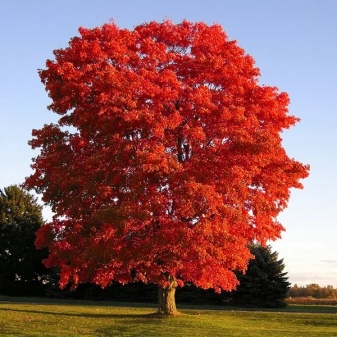
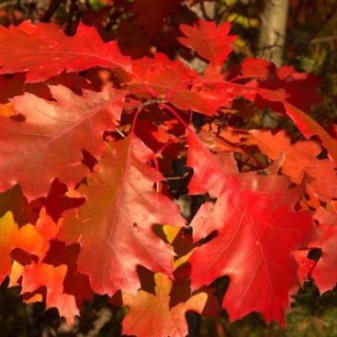
Description
In ancient times, a tree such as an oak was considered the main one among other plants; cutting it was a strict taboo. A cult tree was planted in the very center of the village, on the main square.
The plant under the botanical name red or red-leaved oak belongs to the Beech family. In Latin, this name sounds like Quercus rubra.
In botany, there is a description of its two main varieties: the first is called the northern, holly or Canadian oak, the second is known throughout the world as the American oak.
Canadian or Holly can be found throughout Canada, especially in the east and south, in Nova Scotia, Ontario, and Quebec. An exotic oak tree with a “flaming” crown is one of the national symbols of this country. Trees actively reproduce in dense forests, in areas of glacial deposits, along river banks. The absence of stagnant moisture in the soil and low air humidity have a positive effect on the growth rate.
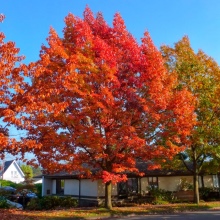


Canadian oak loves rich and fertile soil. The culture is highly sensitive to light and needs sufficient sunlight. Therefore, the plant rarely takes root in northern climates - prolonged and cold nights interfere. Although the oak is resistant to shade, it can grow in a dense forest. Strong gusty winds are also not terrible for a tree.
Oak bark is winter-hardy, which allows the tree to live up to 200-500 years in the wild. The most famous representatives of red oaks in history have survived to one and a half to two millennia! A tree that has reached a hundred or more years is considered to be mature. Oak grows rapidly until the age of 30, then the process slows down a little, and growth continues not in height, but in width. The age of an oak tree is determined by a specially developed formula, into which the value of the diameter in centimeters is entered. Also determines the long-liver by a large number of rings on the cut. Several pieces appear every subsequent year.

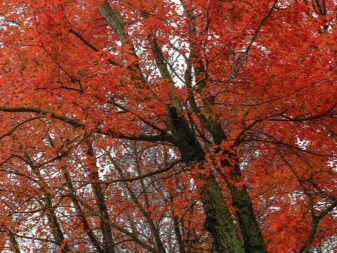
The American oak, unlike its Canadian counterpart, is only dominant in the eastern United States. Its trunk is slightly lower, has a height of 18 to 26 meters. It is famous for its high-performance timber, according to statistics, at least one third of the world's wood-based materials production comes from northern oak. The color of the wood is light brown, but gradually becomes darker over time. It is difficult to process the material as it has a high hardness. Oak products are distinguished by their rare strength and durability, are resistant to negative external influences, and can serve up to 100 years or more.
Durable natural material is great for shipbuilding - building ships and boats. High quality furniture, construction timber and parquet, barrels and other wooden containers are made from it. Branches, bark, leaves and acorns are also processed and used for technical purposes, from which ink, permanent dyes for fabrics and leather are obtained.

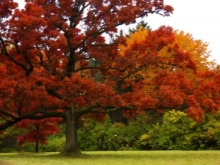

Red oak brings health benefits to people, many recipes for infusions and decoctions from this plant have been known for a long time. Leaves and bark are most often used for medicinal purposes; from the pollen of inflorescences during flowering, bees receive medicinal honey. Decoctions from the leaves are useful for diseases of the lungs, gastrointestinal tract. Infusions eliminate colic, help with stomach ulcers, bleeding gums, liver disease, varicose veins. Oak bark - a well-known pharmaceutical agent, used for excessive sweating, skin rashes.
The branches are used for making excellent brooms for the bath, and incense sticks are made of wood.
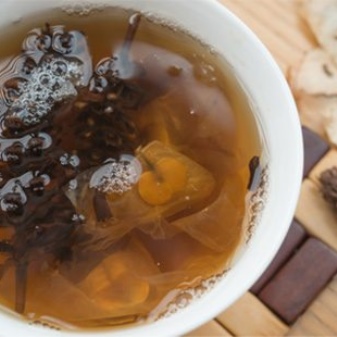
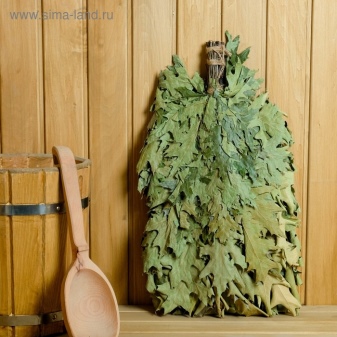
Red oak was brought to Russia in the 19th century; a large number of plants can be seen in the Botanical Garden of St. Petersburg. Naturally, the holly oak grows in Russia in the forests of the Moscow region, in the Urals, the North Caucasus. The cultivated plant is planted in the parks of Belarus and the Baltic states.
The tree looks thin-stemmed - the height of the trunk can reach 25-30 meters, and the diameter is no more than one and a half meters. The bark is rather thin and smooth in structure. In shade - light gray and reddish in young plants, dark gray in mature plants. As the tree ages, the bark tends to crack. The crown is wide and lush, in the form of a tent, the diameter of the crown is significant. The root goes deep into the ground, its length can reach 20 m.
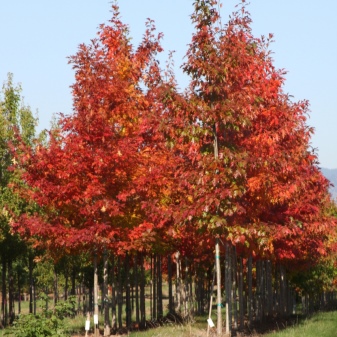

The color of the leaves gave the name to the whole plant, as the young foliage of the oak is colored reddish. The youngest trees, after blooming, abound in bright crimson leaves; in older trees, the shade of the leaf color changes, becoming darker or burgundy. After the leaves have fully bloomed, they change color to green, and in the fall they turn reddish and brownish again. If in spring or summer the tree is almost indistinguishable from the rest, then in autumn the red oaks are an amazing sight, brightly standing out with their elegant beautiful foliage against the background of the yellow decoration of the forest.
The leaves are narrow, with shine, about 15-20 cm long, on the leaf on all sides there are deep notches, lobes with sharp edges.
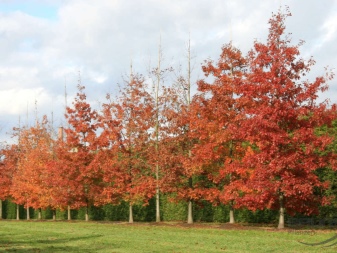

The tree begins to bloom in late spring and coincides in time with the appearance of the first leaves. Lasts approximately 7-8 days. The fruits are reddish-brown acorns, the first time they appear almost immediately, in the second year of the tree's life, and from about 15 years old the oak bears fruit constantly.
Acorns are oval, 1.5-2 cm long, with a rounded nose. They ripen in autumn and have valuable nutritional and cosmetic properties. Serve as a favorite treat of wild boars and pigs. They are also used to make flour for the confectionery industry.
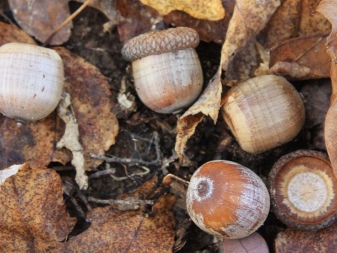
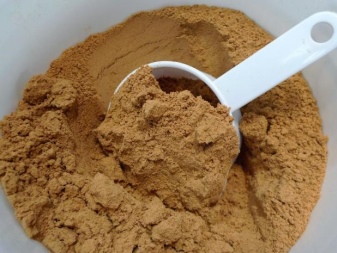
Planting and leaving
You can plant an oak either in the spring, as soon as the snow melts, or in the fall, before the frost comes. For Russia, the best time is considered to be the spring months of March and April, and in the fall - October and the first half of November.
Seat selection
The landing site at the summer cottage is chosen open and well-lit. Maturation and growth directly depend on this. Red oak has a pronounced attitude to light, it is quite photophilous. If the plant is planted on the shady side, the formation will be inactive and delayed, and the oak will not bear fruit. Therefore, they choose an open area where the sun stays most of the day.
To begin with, when planting, you need to dig a small hole in the ground, then place drainage in it: dry leaves, crushed stone. The neck of the root should not be too deep and rest against the bottom of the hole.
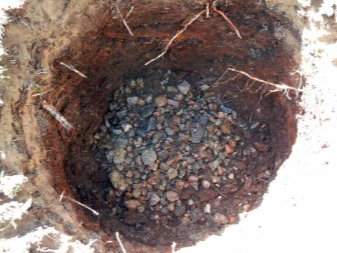
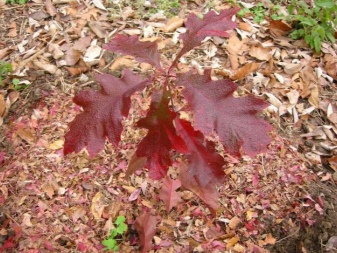
The root system of red oak occupies a vast area, spreading in the ground, which is important to consider when choosing a site. There should be no other plants around so that the crown can freely fit in space over time.
Soil requirements
Well tolerates soil with excess acidity. Oak does not require special conditions for planting, but does not react well to lime and high moisture levels in the soil. The optimum soil composition is a mixture of peat, turf and sand.
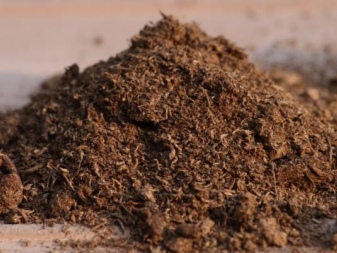
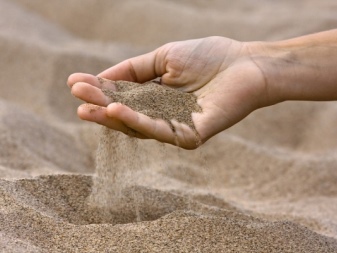
Watering
The young tree is watered regularly, weeding around the weeds that interfere with moisture absorption. Watering is especially important during hot and dry seasons. A month before the onset of leaf fall, they stop watering. Preparation for winter begins, which the tree carries out on its own.

Top dressing
When planting a holly tree, it is undesirable to use organic fertilizers. The soil is fed with ammonium nitrate, mullein and urea.

Reproduction
The northern oak is easy to cultivate, it is planted in summer cottages and garden plots. For reproduction, fruits are used - acorns, as well as seedlings, one-year-old cuttings of roots or stumps.
- Acorns... They are harvested in the fall, during the ripening period, and stored until spring, until the moment of planting. To get a healthy tree, take acorns strong and without damage, full. Store fruits in a pantry at a low temperature, no more than + 3 ° C, so that they do not germinate. Packed in paper or put in a net. Acorns can dry out and will be unusable if the humidity during storage is insufficient, but at the same time its level should not exceed 80%, since otherwise the acorns can easily become moldy. Periodically check for mold, separating healthy fruits from sick ones. Prepared acorns are planted in the spring. The depth of immersion in the ground during planting is no more than 10-12 cm. Having lowered it into the hole, dry foliage is poured along with the fruit.
This is done to maintain optimal moisture levels during growth as well as air circulation.
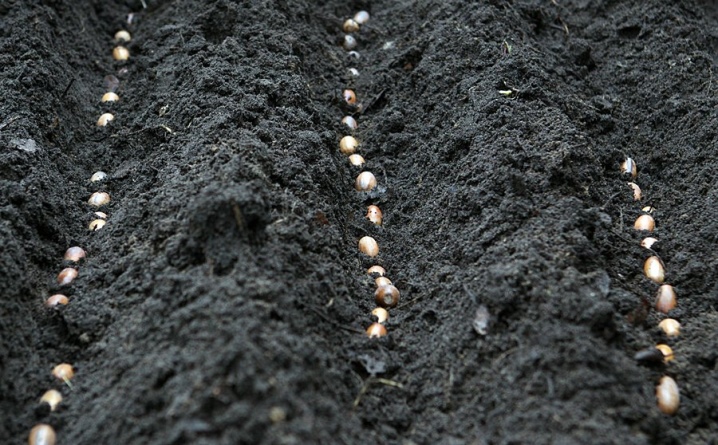
- Seedlings... This is the name of the sprouted seedlings from acorns. Seedlings are found in a forest belt or park. They must be dug out carefully so that the entire root system remains intact. In order for the seedling to successfully take root in a new place, you need to take with it a little soil from the place where it was found. You need to plant a seedling in early spring, until the leaf is formed. To do this, prepare a place, dig a hole at least 20 cm deep. The root should enter the hole completely, while the remainder of the acorn should be placed a few centimeters deep.
The root system does not take root in a new place immediately, active growth begins several months later, in the summer.
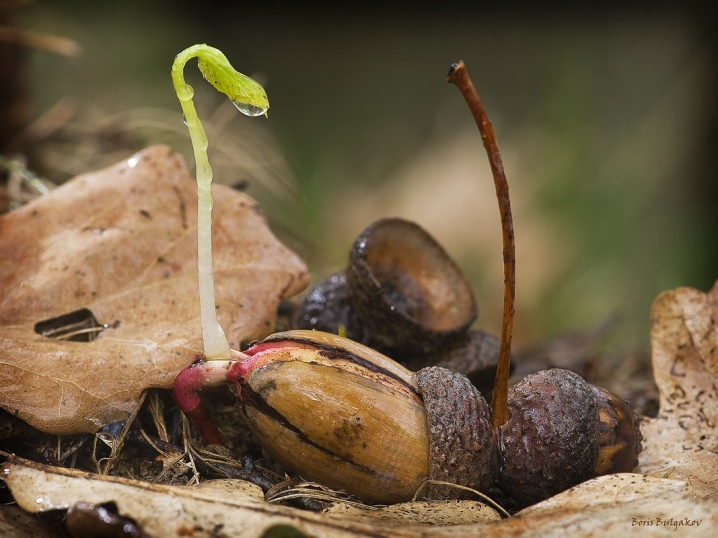
- Layers... This is the name for very young trees, no more than two years old. One-year-old seedlings are mainly used. They usually have underdeveloped lateral roots, but the central taproot is already strong. Planting layers is easy. To plant, make a deep hole so that the rhizome fits freely. The area around the place is freed from the grass cover, which slows down growth.
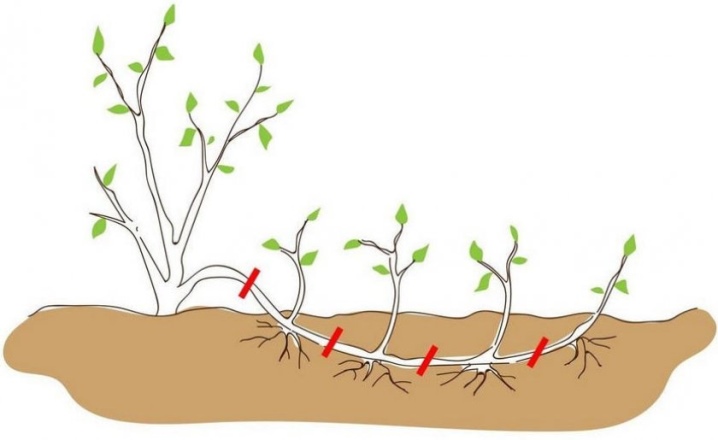
- Saplings... When buying a seedling from a nursery, you need to make sure that the roots are completely covered with a large earthy clod. Myceliums remain in it, helping to develop the root system, giving growth to the tree due to the provision of nutrients. If the integrity of the earth clod is violated, the plant will not take root in another area.
The distance between individual seedlings is at least 6 meters so that the trees do not interfere with each other.
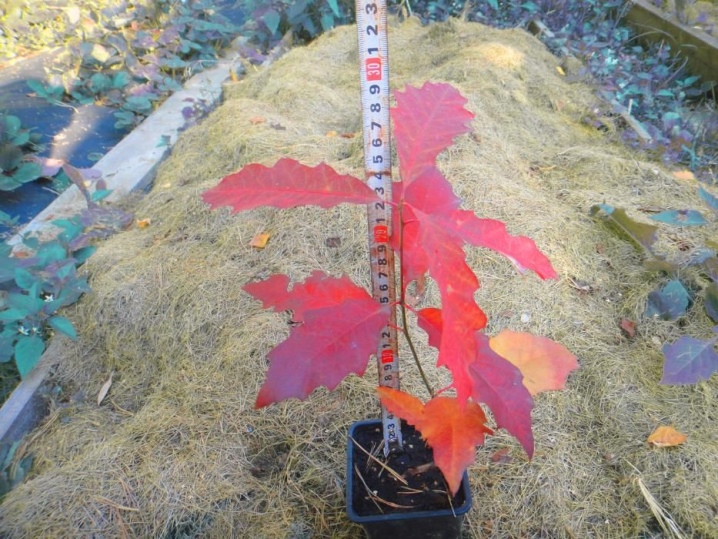
Pests and diseases
Young trees must be looked after carefully. For the first five years of life, they are covered with burlap in the cold season to prevent freezing and disease. The burlap should be dense, air permeable.
An adult oak is rarely attacked by pests; it has a powerful root system and strong branches. The main enemies of the beech family are the fruit moth and leafworm. A pest such as powdery mildew, known for its fast and aggressive action, is the most dangerous. The pest causes necrotic changes in the branches, up to the total death of the entire tree. It is easy to detect the disease by the white bloom on the leaves.By the end of summer, small black dots appear on the powdery coating - these are the bodies of the fungus. Powdery mildew is capable of destroying a young plant, since it does not allow the shoots to stiffen. The disease is spread by insects gnawing leaves. After their forays into crowns, oak trees of any age may be affected.
Preventive treatment of branches is carried out with a mixture of baking soda and water. If pests have already appeared, you must immediately apply fungicides in order to completely neutralize the effect and destroy the parasites. In addition to fungicides, plants are treated with a solution of copper sulfate and colloidal sulfur.
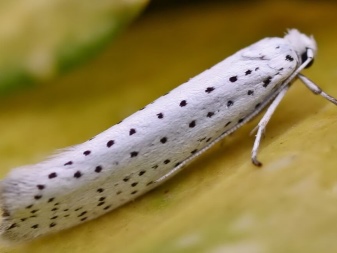

Use in landscape design
Landscape designers make extensive use of the decorative properties of an unpretentious and bright plant. Cultivated oaks can be planted in the garden, and in autumn they become a real decoration of the park and garden. They usually feel comfortable next to the plant:
- linden and juniper bushes;
- white acacia;
- periwinkle;
- clefthoof;
- all types of conifers.
It is also customary to plant azalea bushes and almonds nearby oak. This tradition comes from oriental gardening. From crops that bloom early, choose the violet and crocus, which bloom before the oaks shed their leaves.
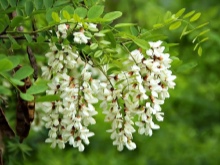
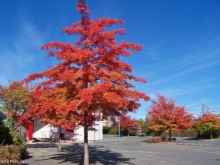
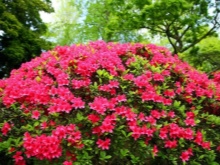
For more information on red oak, see the next video.



































































The comment was sent successfully.